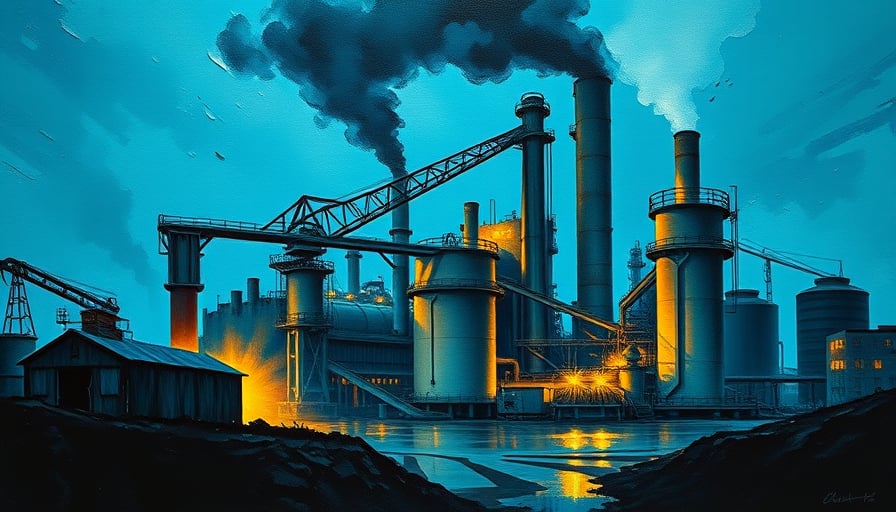Zhejiang Huayou Cobalt Co Ltd: A Case Study in Market Volatility and Strategic Uncertainty
Zhejiang Huayou Cobalt Co Ltd, a Shanghai‑listed producer of battery‑grade cobalt and nickel‑cobalt‑manganese hydroxide, is a textbook example of a company caught in the cross‑fire of macro‑economic swings, supply‑chain disruptions, and shifting investor sentiment. Its market cap of roughly 120 billion CNY and a price‑to‑earnings ratio of 20.94 place it firmly in the high‑growth, high‑risk zone that attracts speculative capital while exposing the firm to sharp price swings.
1. Immediate Impact of the Metal‑Sector Sell‑off
On 28 October 2025 the Chinese metal market experienced a pronounced decline. The Daily Economic News reported that the metal sector fell under pressure, with industrial metals leading the slide. The article cited Huayou Cobalt’s stock falling more than 4% as part of a broader downturn that also saw copper and other base‑metal stocks tumble. The decline was not isolated: Zijin’s copper and Xinxin were down over 5%, and the China Rare‑Earth ETF lost more than 3%. The market’s reaction was swift, reflecting the heightened risk perception that even a single, large player can drag the entire sector down.
The sell‑off was fueled by several factors that investors and analysts are now dissecting:
- Supply‑side uncertainty – Global cobalt output has been volatile, with a notable slowdown in the Democratic Republic of the Congo, the world’s largest producer.
- Demand‑side recalibration – Electric‑vehicle (EV) and battery manufacturers are tightening their production schedules, creating a lag between cobalt demand and supply.
- Geopolitical friction – Tensions between China and the U.S. over trade and technology have amplified fears that supply chains could be disrupted.
Huayou, which operates exclusively within China, is thus exposed to both domestic policy swings and international commodity flows. The 4% drop, while modest in absolute terms, is a clear signal that the market is increasingly skeptical of cobalt’s short‑term growth trajectory.
2. Broader Context: Metal‑Sector Resilience vs. Short‑Term Pain
Despite the overnight decline, the longer‑term backdrop remains mixed. According to a hotcopper report dated 27 October, the metal‑sector ETF 512400 has gained over 80% year‑to‑date, suggesting that the sector’s underlying fundamentals remain robust. Furthermore, several battery‑material producers reported significant quarterly earnings surges, which could buoy confidence in the industry as a whole.
Yet, the Daily Economic News also pointed out that metal‑sector volatility remains high in 2025, citing supply‑side shocks and the uncertain demand from the EV and battery industries as key contributors. These dynamics create a “tug‑of‑war” scenario: on one hand, rising battery demand can drive up cobalt prices; on the other, any slowdown in EV production or alternative battery chemistries can depress prices abruptly.
3. Strategic Implications for Huayou Cobalt
Given the current environment, Huayou must navigate a precarious balance between scaling production to meet rising demand and safeguarding against price volatility:
- Production Flexibility – The company’s focus on cathode materials and nickel‑cobalt‑manganese hydroxide positions it well for diversified product offerings. However, expanding capacity without a clear demand forecast risks over‑investment if cobalt prices fall.
- Supply Chain Diversification – Relying solely on Chinese sources limits exposure to global supply disruptions. Establishing partnerships outside China could mitigate risk but may incur higher costs.
- Pricing Power – A P/E of 20.94 suggests investors expect earnings growth, yet the recent 4% drop underscores the fragility of that expectation. Enhancing pricing power through premium product differentiation may be essential.
The company’s website, www.huayou.com , does not currently disclose a detailed risk management strategy, raising questions about transparency and investor confidence.
4. Investor Sentiment and Market Expectations
The 28 October data also highlights a broader shift in investor sentiment. While some funds, such as the 易方达资源行业混合 (YIFANG RESOURCES INDUSTRY MIXED FUND), have increased exposure to metals and even added cobalt to their portfolios, many retail and institutional investors remain wary. The mixed performance of various mixed‑asset funds—some reporting significant quarterly profits and others modest gains—reflects the sector’s uneven performance.
In this context, Huayou’s share price movements become a litmus test for the market’s tolerance for risk. A sustained decline could erode investor trust, while a rebound would reaffirm the company’s position as a key player in the battery materials supply chain.
5. Conclusion
Zhejiang Huayou Cobalt Co Ltd sits at the nexus of a volatile commodity market and a rapidly evolving battery industry. The 4% drop in its share price on 28 October is symptomatic of broader uncertainty surrounding cobalt supply and demand, geopolitical tensions, and shifting EV production schedules. For the company to maintain its competitive edge, it must adopt a flexible, risk‑aware strategy that balances expansion with prudence, diversifies its supply base, and communicates its risk management plans transparently to investors. Only then can it transform the current market turbulence into a sustainable growth trajectory.
